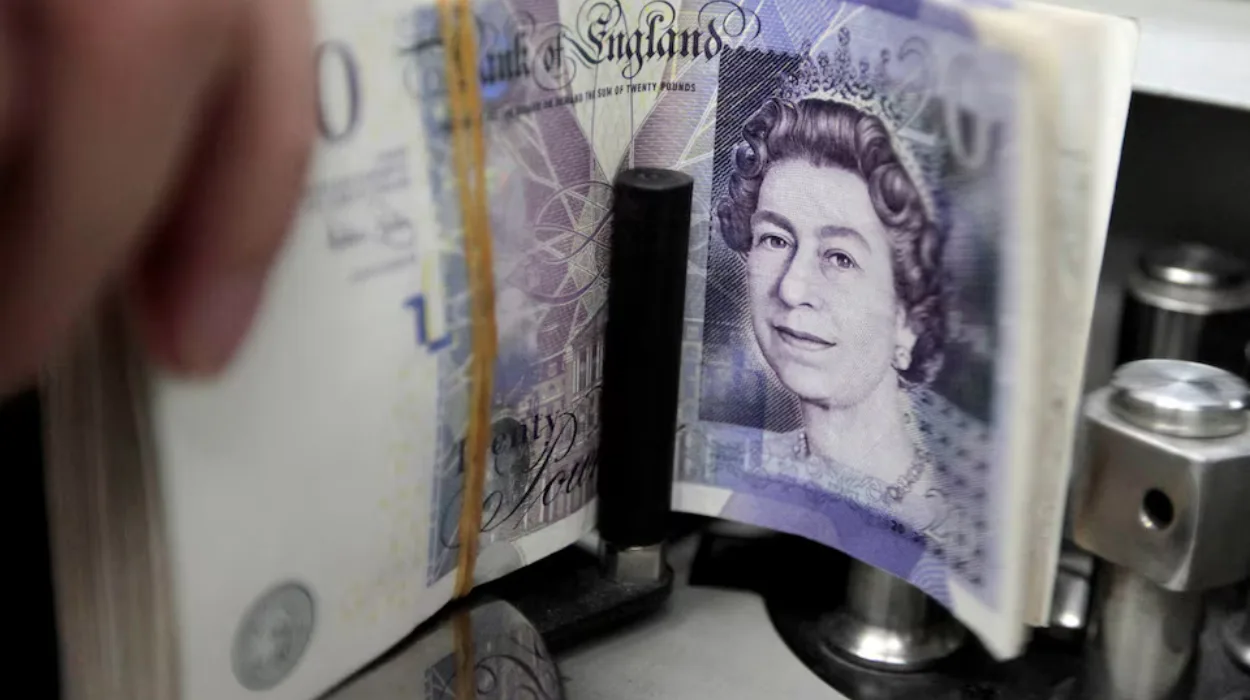UK (Parliament Politics Magazine) – The pound fell to a 14-month low as bond market sell-offs raised investor concerns over the UK economy, putting more pressure on Chancellor Rachel Reeves.
The pound declined as the cost of credit in Britain climbed to its top level in 10 years after the 2008 financial crisis, which saw a near collapse of bank lending.
On Thursday morning, despite the government’s efforts to stabilize the markets, UK borrowing costs surged. On Wednesday night, Chancellor Rachel Reeves issued an uncommon second public statement, asserting her “iron grip” on the nation’s finances.
Growing costs have raised concerns among financial experts that the government might need to increase taxes or reduce spending to reach its borrowing limits.
Michael Brown, a senior strategist at Pepperstone, has warned that the situation in the UK is becoming quite troubling.
As reported by The Guardian, he pointed out that the shift in bond yields and a falling currency suggests investors “losing confidence in the government in question’s ability to exert control over the fiscal backdrop. We’re not at the Truss/Kwarteng stage just yet, but things are clearly on very shaky ground indeed.”
The interest rate on the UK’s 10-year bonds surged by 12 basic points to 4.921% in early Thursday trading, marking the highest since 2008, before dropping a little. Yields on 30-year bonds, which reached a 28-year high earlier this week, also rose to 5.474%.
The head of global markets at ING, Chris Turner, stated, “Our best understanding of yesterday’s sterling sell-off is that the global bond market sell-off touched a raw nerve in the gilt market and that then the gilt spread widening prompted investors to cut back on overweight sterling positioning.”
Even with recent drops, the pound stays higher than the 2022 mini-budget low.
A representative for the Treasury stated, “No one should be under any doubt that meeting the fiscal rules is non-negotiable and the government will have an iron grip on the public finances.”
They also stated that the Chancellor is fully dedicated to pursuing economic growth and advocating for workers.
Sir Keir Starmer’s official spokesperson said, “I’m obviously not going to get ahead. It’s up to the OBR (Office for Budget Responsibility) to make their forecasts.”
The government said on Wednesday it won’t comment until the official borrowing outlook is published in March.
The shadow Chancellor, Mel Stride, argued that the chancellor’s large spending and borrowing plans outlined in the Budget are increasing the government’s borrowing costs.
Gabriel McKeown, from Sad Rabbit Investments, said the increase in borrowing costs has limited Chancellor Reeves’ budget. This could threaten Labour’s investment plans and lead to tough spending changes.
Global borrowing costs have risen recently due to concerns that newly elected president Donald Trump’s proposed tariffs could increase inflation.
The OBR will start revising its forecast on government borrowing next month. The final report will be presented to parliament in March 2025.
UK government borrowing and impact
The government mainly relies on taxes like income tax, national insurance, VAT, and corporate taxes to fund its activities. While taxes can sometimes cover all costs, the government often faces a gap between income and spending.
To overcome this gap, the government may raise taxes, cut spending, or borrow money. Borrowing is primarily used to promote economic growth and finance major projects such as infrastructure development. However, it can also harm companies and wages if taxes are increased.
Rising interest rates have made the cost of servicing national debt more noticeable. The government now offers 5.25% on 30-year gilts, the highest rate in this century.
How do borrowing and interest affect governments?
As the government allocates more money to cover its debt payments, it may have less to invest in public services. While some experts have raised concerns about the high cost of interest debt, others maintain that it could fuel economic expansion and generate more tax income.
In her October Budget, Chancellor Rachel Reeves updated the debt definition to facilitate more investment funding. The government will now track public sector net financial liabilities (PSNFL), which includes student loan repayments.
Difference between deficit and debt
Debt is the total sum the government owes over the years, while the deficit is the yearly gap between what the government earns and spends. A surplus, where spending is less than income, helps reduce debt. Repeated surpluses can also contribute to reducing overall debt levels.


